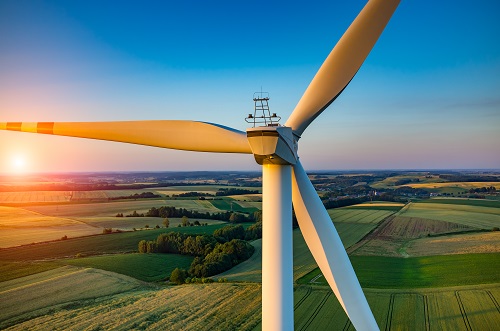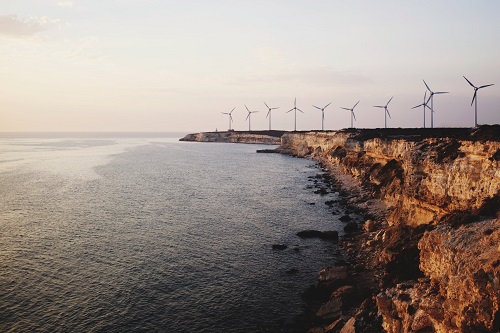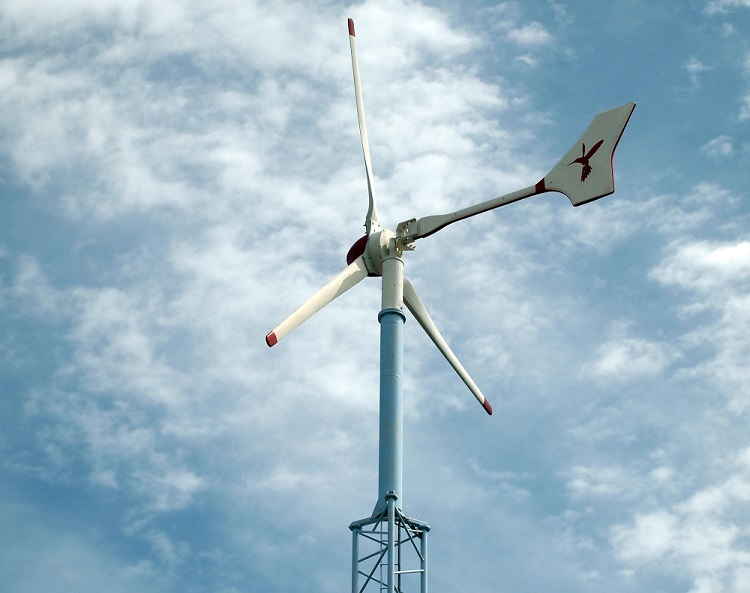
 Here in the UK, it seems we are always being encouraged to be ‘greener’. From the cars we drive to the holidays we take and even the food we eat, we are constantly reminded to consider the carbon footprint of our everyday decisions. Being green is no longer reserved for hippies or new age eco warriors; at long last, it’s cool to be concerned!
Here in the UK, it seems we are always being encouraged to be ‘greener’. From the cars we drive to the holidays we take and even the food we eat, we are constantly reminded to consider the carbon footprint of our everyday decisions. Being green is no longer reserved for hippies or new age eco warriors; at long last, it’s cool to be concerned!
When it comes to energy usage, could there be a better badge of honour than a shiny new wind turbine mounted onto the roof of our homes, whizzing around generating healthy, renewable energy for all the family to use? Well, depending on the location of your home and the money you’re willing to spend, there may be several better options. Here’s what you need to know if you’re considering wind power for your home.
What are the advantages of using a wind turbine?
 There is no doubt that wind power works. According to government statistics, onshore wind energy provided more than half of the UK’s renewable power in 2014, and accounts for almost 20% of the UK’s current energy generation (1). But, of course, here we’re talking about those monster wind farms stationed around the countryside, not wind power on a domestic scale.
There is no doubt that wind power works. According to government statistics, onshore wind energy provided more than half of the UK’s renewable power in 2014, and accounts for almost 20% of the UK’s current energy generation (1). But, of course, here we’re talking about those monster wind farms stationed around the countryside, not wind power on a domestic scale.
In terms of energy generation, the number of domestic scale wind turbines already commissioned in the UK is a small drop in the ocean. However, that doesn’t mean that there are not any benefits to be had. Installing wind power at your premises could mean:
• Slashing your energy bills: There is no lack of wind in the UK, in fact it’s the windiest country in Europe, particularly in Scotland (2). Once you’ve paid for your turbine, the wind is free, forever.
• Generating energy when you need it most: Here in the UK, the wind blows most in winter. Conveniently, this is also when we require the most electricity, due to dark evenings and cold weather.
• Generating additional income: With the UK’s feed-in tariffs (3), you could get paid for the energy you produce, whether you use it yourself or not. If you don’t use it yourself, you can sell it back to the grid for additional payments too.
• Mitigating future energy price rises: Electricity costs have been on the up for almost a decade. With uncertainty over the cost of energy in the coming years, your decision to generate a supply of your own at your home could help you soften the blow of future price increases.
• Reducing your carbon footprint: With no harmful emissions, no finite supply of energy and no CO2 emissions to worry about, wind energy is a sustainable and renewable source of energy that will shrink your carbon footprint from day one.
The benefits of wind power for your home are as obvious as they are significant, but does that mean we should all be rushing out to buy turbines right away? Not necessarily. Wind turbines on a large scale are proven technology, and are being heavily invested in at both onshore and offshore sites. At a domestic level, things become less clear.
Roof mounted wind turbines
Despite companies like B&Q rushing to stock cheap roof mounted wind turbines a few years ago (4), these turbines have subsequently proven to be relatively ineffectual. Research has shown that many roof mounted turbines were barely able to power an energy saving light bulb, and had the undesirable side effect of causing disruptive vibration inside the building (5).
For a turbine to work well, it needs a consistent and steady supply of wind. Urban areas such as cities experience highly turbulent wind levels, as wind is channelled around closely-packed buildings of varying heights. This means that, often, roof mounted turbines in urban locations simply do not work. Studies by both the Energy Saving Trust (6) and the Warwick Wind Trials (7) concluded that roof mounted turbines are rarely worth it and that, in most cases, the householder would be better off choosing a pole mounted wind turbine instead.
Pole mounted wind turbines – the better option
 The best way to generate energy using wind at your domestic property is to install a free standing, pole mounted wind turbine some distance away from your house. In order for them to work well, pole mounted wind turbines need to be suitably high and far enough away from any obstructions so that they can get a good blast of wind without significant turbulence.
The best way to generate energy using wind at your domestic property is to install a free standing, pole mounted wind turbine some distance away from your house. In order for them to work well, pole mounted wind turbines need to be suitably high and far enough away from any obstructions so that they can get a good blast of wind without significant turbulence.
Domestic pole mounted wind turbines cost between £9,000 and £19,000 for a 2.5KW turbine, or between £21,000 and £30,000 for a 6KW system (8). These KW ratings are potential energy ratings which rely upon a consistent, non-gusty wind supply at the optimum speed – so they should be taken with a fairly large pinch of salt.
Planning permission should not be required due to new permitted development rights. However, if you are in an AONB, a conservation area or you live in a listed building, you may need to seek permission. It’s always best to check with your local authority before signing up for this type of installation.
Is a wind turbine right for me?
 A successful wind power installation will depend on a couple of important factors. Firstly, you need a site with a wind speed off at least 5 – 6 metres per second (m/s). You can look this up at the UK’s wind speed database, although it is recommended to install an anemometer prior to investing in a turbine of your own.
A successful wind power installation will depend on a couple of important factors. Firstly, you need a site with a wind speed off at least 5 – 6 metres per second (m/s). You can look this up at the UK’s wind speed database, although it is recommended to install an anemometer prior to investing in a turbine of your own.
You also need a site where there will be little to no wind turbulence. This means it should be around 150m away from tall objects such as buildings or trees, and at least 9m higher than any obstacle within that range (9).
A study by the Energy Saving Trust (10) identified these key points to consider before deciding to invest in wind power for your home:
• Wind works, but only when installed in the right place and in the right way
• Wind can deliver carbon and energy savings for the UK, but on a limited scale in domestic applications
• The greatest potential for household scale wind is in Scotland
• Wind speeds are highly variable and tricky to predict, meaning payback periods and financial savings are difficult to calculate
• Before deciding to invest, householders should use all available sources of data to assess the availability of wind at their site and take advice from industry experts
• Householders should only use installers and products accredited under the Microgeneration Certification Scheme (MCS) (11), as failure to do so will make the installation ineligible for the feed-in tariff
• Wind should be considered alongside other renewable energy technologies and assessed for suitability in comparison to other options
So what does this all mean? In short, if you are considering using wind to power your home, you should do your research to make sure it’s going to do what you want it to do. There are other renewable energy technologies out there which have more predictable payback periods and a proven track record. However, in the right location and with the right product, wind energy has the potential to deliver significant energy and carbon savings for your home. The more you use electricity in your home, the more you have to gain by generating your own sustainable energy; households that use electric heating are particularly well positioned to benefit. Just do your homework first! With home renewable energy, you could essentially be running our electric radiators for free...
References
1. [Online] http://www.businessgreen.com/bg/news/2420000/government-figures-confirm-wind-delivers-lions-share-of-uk-clean-energy.
2. [Online] http://www.bbc.com/news/uk-scotland-15283013.
3. [Online] https://www.gov.uk/feed-in-tariffs/overview.
4. [Online] http://www.thisismoney.co.uk/money/bills/article-1602853/On-your-roof-for-pound1500-BampQs-windmill.html.
5. [Online] http://www.theguardian.com/environment/2006/dec/21/energy.guardianweeklytechnologysection.
6. [Online] http://www.energysavingtrust.org.uk/domestic/reports/location-location-location.
7. [Online] http://www.warwickwindtrials.org.uk/2.html.
8. [Online] http://renewableenergyguild.co.uk/domestic/.
9. [Online] http://www.engineering.com/ElectronicsDesign/ElectronicsDesignArticles/ArticleID/9556/Rooftop-Wind-Turbines-Are-They-Worthwhile.aspx.
10. [Online] http://www.energysavingtrust.org.uk/domestic/sites/default/files/reports/Location_Location_Location_field_trial_small-scale_wind_report%20%282%29.pdf.
11. [Online] http://www.microgenerationcertification.org/.





